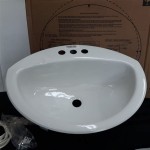How To Lay Floor Tiles in an Upstairs Bathroom
Laying floor tiles in an upstairs bathroom can be a rewarding DIY project, adding a fresh, modern touch to your space. However, it requires careful planning and execution to ensure a professional-looking result. This article will guide you through the essential steps involved in laying floor tiles in an upstairs bathroom, covering everything from preparing the subfloor to grouting and sealing.
1. Preparing the Subfloor
A solid, smooth subfloor is crucial for a successful tile installation. The subfloor should be level and free from any imperfections, such as cracks, dips, or unevenness. This step is particularly important in an upstairs bathroom due to potential movement and deflection of the floor joists.
Here's how to prepare the subfloor:
- Remove Existing Flooring: Carefully remove the existing flooring, ensuring you dispose of it responsibly.
- Inspect the Subfloor: Examine the subfloor for any signs of damage, rot, or unevenness.
- Repair Damage: Repair any damage to the subfloor, using plywood or other suitable materials.
- Level the Subfloor: If the subfloor is uneven, use a self-leveling compound to create a smooth and level surface.
- Install a Moisture Barrier: If necessary, install a moisture barrier over the subfloor to prevent moisture from seeping up from below.
2. Planning and Measuring
Once the subfloor is prepared, it's time to plan the tile layout and make necessary measurements.
Here's how to plan and measure for your tile installation:
- Choose Your Tiles: Select the type, size, and color of tiles that best suit your bathroom's style.
- Create a Layout Plan: Draw a plan of your bathroom space, including the location of fixtures, doors, and windows.
- Determine the Tile Pattern: Decide on the tile pattern you'll use, such as a straight layout or a diagonal pattern.
- Calculate Tile Requirements: Measure the bathroom space and calculate the number of tiles you'll need, allowing for waste and cuts.
- Consider the Subfloor: Ensure that the tile layout is suitable for the type of subfloor you have.
3. Installing the Tiles
With the subfloor prepared and your tile layout finalized, you're ready to install the tiles.
Here are the steps for installing tiles:
- Apply Thin-set Mortar: Spread a layer of thin-set mortar over the subfloor, following the manufacturer's instructions.
- Lay the First Tile: Start laying the first tile in the center of the bathroom, working your way out.
- Space the Tiles: Use tile spacers to maintain even spacing between the tiles.
- Install the Tiles: Press each tile firmly into the mortar, ensuring it is level and flush with the surrounding tiles.
- Cut Tiles as Needed: Use a tile cutter to cut tiles to fit around fixtures and edges.
4. Grouting and Sealing
Once the tiles are installed, you need to grout the joints and seal the tiles to protect them from moisture and stains.
Here's how to grout and seal your tiles:
- Clean the Tiles: Thoroughly clean the tiles to remove any mortar residue.
- Apply Grout: Use a grout float to apply grout to the joints between the tiles, ensuring the grout is evenly distributed.
- Remove Excess Grout: Remove any excess grout with a damp sponge, wiping in a diagonal motion.
- Allow the Grout to Dry: Allow the grout to dry completely before applying sealant.
- Apply Sealant: Apply a sealant to the tiles to protect them from moisture, stains, and scratches.
Following these steps will help you achieve a professional-looking and durable tile installation in your upstairs bathroom. Remember to consult the manufacturer's instructions for specific products and techniques, and wear appropriate safety gear throughout the project. With careful planning and execution, you can enjoy the beauty and practicality of tiled flooring for years to come.

How To Tile A Bathroom Floor Wickes

Tiling On Wooden Floors Part 1 Preparation Bathroom Guru
Preparing The Bathroom Floor For Tiling Blog Homeandawaywithlisa

Tiling On Wooden Floors Part 1 Preparation Bathroom Guru

Laying Floor Tiles In A Small Bathroom Tile Layout Diy Installation

How To Tile A Bathroom Floor Ceramic Tiles Installing

Upstairs Bathroom Renovation Part 2 Stacy Risenmay

Tiling On Wooden Floors Part 4 Overboarding Bathroom Guru

How To Prepare Subfloor For Tile The Home Depot

Tiling On Wooden Floors Part 4 Overboarding Bathroom Guru
Related Posts







